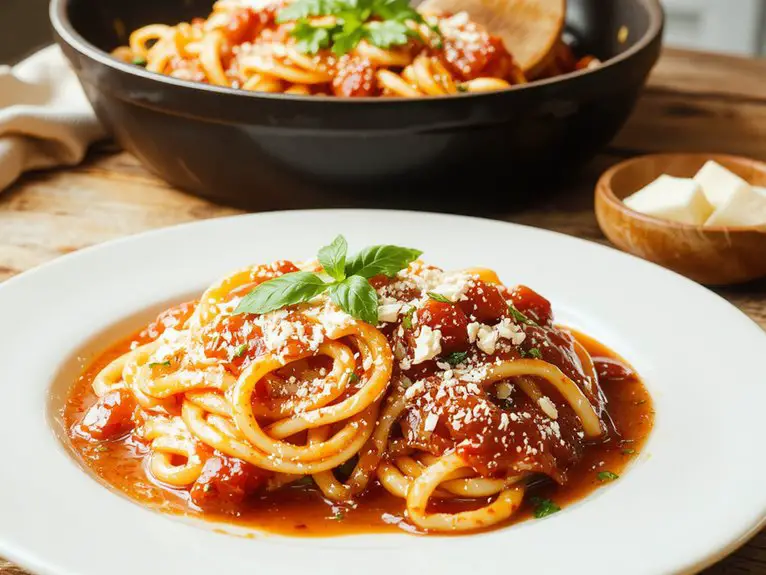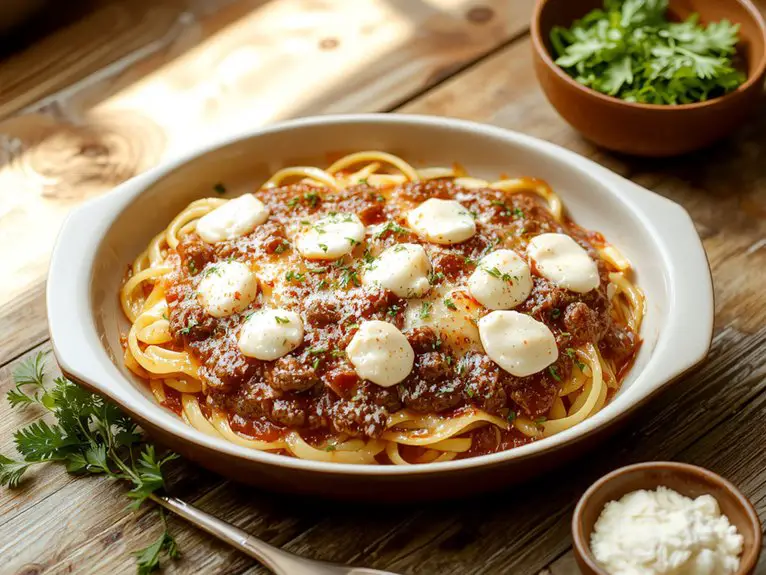Recipe
There’s something magical about a bowl of homemade beef stew—the kind that warms you from the inside out and makes you feel like you’re wrapped in a cozy blanket on a chilly day. This recipe is the ultimate comfort food, and once you try it, you’ll see why it’s become a staple in my kitchen.
The secret? Tender chunks of beef slow-simmered to perfection, paired with hearty vegetables and a rich, savory broth that’s bursting with flavor. What sets it apart is the addition of a splash of red wine and a pinch of smoked paprika, which adds depth and a subtle smokiness you won’t be able to resist.
Every spoonful is a comforting blend of melt-in-your-mouth beef, velvety potatoes, and carrots that soak up all that delicious goodness. Trust me, this stew isn’t just food—it’s an experience.
And the best part? It’s incredibly easy to make, even if you’re not a seasoned chef. Let’s jump right in and create something truly unforgettable.
Ingredients
The key to a rich, hearty beef stew lies in the quality and balance of its ingredients. Opt for fresh, high-quality components to build layers of flavor, and don’t shy away from substitutions if you’re missing something—this recipe is forgiving and adaptable. Here’s what you’ll need:
- Stewing beef (chuck roast or round roast): These cuts are marbled with fat, which breaks down during cooking to create tender, melt-in-your-mouth bites. If you can’t find these, brisket or short ribs work well too.
- Olive oil or butter: Either works for browning the meat, but butter adds a deeper, richer flavor.
- Onion, carrots, and celery (the holy trinity): These aromatic vegetables form the base of the stew. Fresh is best, but frozen mirepoix works in a pinch.
- Garlic: Fresh is non-negotiable here—jarred just won’t give the same punch.
- Tomato paste: This adds depth and a touch of sweetness. If you’re out, a dash of ketchup can substitute.
- Beef broth: Homemade or high-quality store-bought is ideal. Bouillon cubes are fine, but adjust for saltiness.
- Potatoes (Yukon Gold or Russet): They hold their shape well and thicken the stew naturally. Sweet potatoes are a tasty twist.
- Bay leaves and thyme: These herbs are essential for that classic stew flavor. Dried works if fresh isn’t available.
- Red wine (optional but recommended): A bold red like Cabernet Sauvignon adds complexity. Skip it if you prefer, but it’s worth the splurge.
- Flour or cornstarch: For thickening the stew. Cornstarch is gluten-free friendly.
- Peas (frozen or fresh): Add them at the end for a pop of color and sweetness.
- Salt and black pepper: Season generously, but taste as you go.
Pro tip: For an extra layer of flavor, sear the beef in batches to avoid overcrowding the pan—this guarantees a beautiful crust instead of steaming the meat. And don’t rush the simmering process; low and slow is the secret to tender beef and a rich, velvety broth.
How to Make the Best Classic Beef Stew Title
Add the beef back to the pot, along with broth, tomato paste, and seasonings like bay leaves, thyme, and garlic. Stir well to combine. Pro tip: For a richer flavor, use a combination of beef and chicken broth.
Simmer the stew on low heat for 1.5 to 2 hours, partially covered, until the beef is fork-tender. This slow cooking process allows the flavors to meld and the meat to become incredibly tender.
Watch out: Check occasionally to confirm the liquid doesn’t evaporate too quickly—add more broth if needed.
Add potatoes and any additional vegetables (like peas or green beans) during the last 30 minutes of cooking. This guarantees they stay tender but not mushy.
Pro tip: Cut potatoes into uniform pieces for even cooking.
Thicken the stew by mixing cornstarch with cold water and stirring it into the simmering liquid. This creates a luscious, velvety texture.
Watch out: Add the slurry slowly to avoid over-thickening.
Taste and adjust seasoning, adding more salt, pepper, or herbs as needed.
Pro tip: A splash of Worcestershire sauce or soy sauce can add depth if the flavors feel flat.
Serve hot, garnished with fresh parsley or thyme, alongside crusty bread or mashed potatoes.
Pro tip: Let the stew rest for 10 minutes before serving—it’ll taste even better!
Nutrition
This hearty homemade beef stew is packed with nutrients to keep you satisfied. Below is the nutritional breakdown per serving.
| Nutrient | Amount per Serving |
|---|---|
| Calories | 350 kcal |
| Protein | 25 g |
| Fat | 12 g |
| Carbohydrates | 35 g |
| Fiber | 5 g |
| Sugar | 8 g |
| Sodium | 600 mg |
Chef Tips
To get the most out of your beef stew, I’d recommend browning the meat first—it creates a deeper flavor base.
Don’t skip deglazing the pan with broth or wine; it’ll add richness.
Use low heat for simmering to keep the meat tender.
Add hearty veggies like carrots and potatoes later so they don’t overcook.
Taste as you go and adjust seasoning. These steps guarantee a perfect stew.
Frequently Asked Questions
Can I Make Beef Stew in a Slow Cooker?
Yes, I can make beef stew in a slow cooker. I’ll brown the beef first for extra flavor, throw in the veggies and broth, then let it cook on low for 8 hours or high for 4-5. It’s so easy!
How Do I Thicken Beef Stew Without Flour?
I’ll thicken my beef stew by mashing up cooked potatoes or stirring in cornstarch mixed with cold water. I can also simmer it longer to reduce the liquid or blend part of the veggies for a thicker texture.
Can I Freeze Homemade Beef Stew?
Yes, I can freeze homemade beef stew. I let it cool completely before transferring it to airtight containers or freezer bags, leaving some space at the top. It keeps well for up to 3 months.
What’s the Best Cut of Beef for Stew?
The best cut of beef for stew is chuck roast—it’s got the perfect balance of fat and meat that breaks down into tender pieces as it cooks. I’ve tried other cuts, but chuck always gives me the best results.
How Long Does Beef Stew Last in the Fridge?
Once I make beef stew, it’ll last in the fridge for 3 to 4 days if I store it in an airtight container. If I need it longer, I freeze it—it stays good for months that way.









